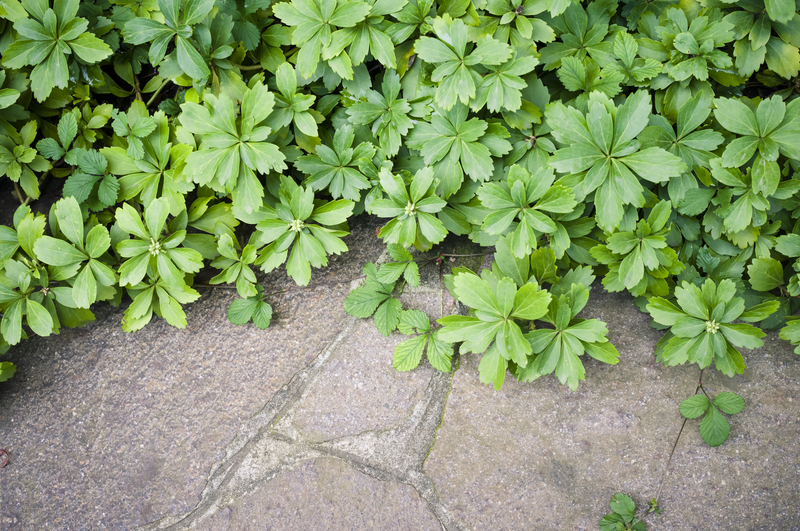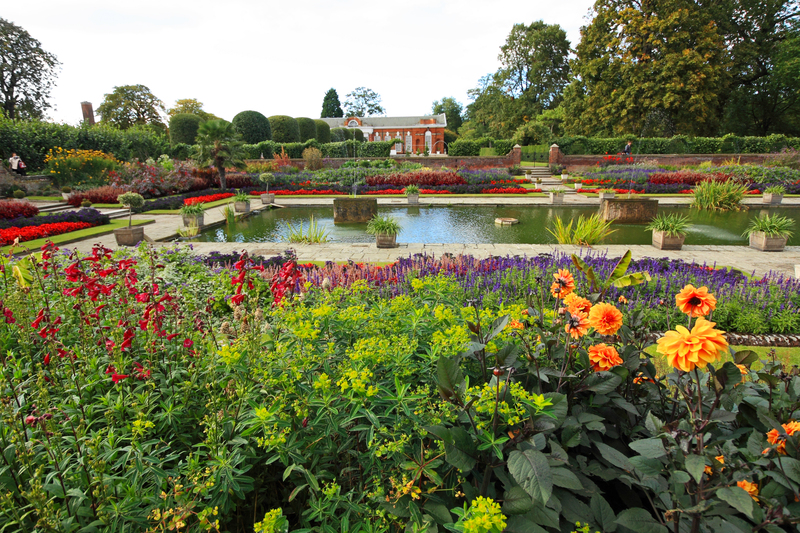Transform Your Space with an Herbal Retreat
Posted on 24/05/2025
Transform Your Space with an Herbal Retreat: The Ultimate Guide to Creating a Tranquil Herbal Sanctuary
Looking to rejuvenate your home and infuse it with relaxation, health, and natural beauty? Transform your space with an herbal retreat. More than just a decor upgrade, an herbal retreat is about bringing the healing and calming energies of nature right into your living environment. Whether you want a small corner filled with soothing scents or an entire room dedicated to herbal tranquility, this comprehensive guide will cover everything you need to know to cultivate your own herbal haven.
Why Build an Herbal Retreat at Home?
Herbal retreats are not only beautiful additions to your surroundings, but they also offer numerous physical, emotional, and spiritual benefits. Creating a dedicated area for herbal wellness can:
- Enhance relaxation and reduce stress
- Purify indoor air naturally
- Provide easy access to fresh culinary or medicinal herbs
- Improve mental clarity and focus
- Increase your connection to the rhythms of nature
Whether 'herbal retreat' means a lush windowsill garden, an outdoor herbal sanctuary, or a cozy tea nook surrounded by plants, there are countless variations. Let's explore how you can transform your space with an herbal retreat--no matter the size of your home.

Planning Your Herbal Sanctuary
Choosing the Right Location
Evaluating your space is the first step to building your personal herbal oasis. Consider these questions:
- Do you want a peaceful indoor corner or a vibrant outdoor nook?
- Does your space get enough sunlight for herbs to thrive?
- Are you working with a large area or a small window ledge?
- Do you need easy access to the plants for daily use?
Ideal spots for your herbal retreat include sunny windowsills, patios, balconies, porches, or even spacious bathrooms with natural light. An important aspect is convenience: place your herbs where you'll see and use them regularly.
Designing for Serenity and Beauty
Your herbal retreat should blend function and aesthetics. To enhance both tranquility and usability:
- Layer different shades of green with a variety of herbal plants
- Add natural elements like wood, stone, or clay pots
- Use aromatherapy with fresh or dried herbs
- Incorporate soft lighting and cozy textiles
- Personalize your retreat with meaningful decor
More than just a garden, your herbal retreat transformation is about creating a healing microclimate where you restore your mind and body.
The Best Herbs for Your Herbal Retreat
Not all herbs are created equal when it comes to indoor or tranquil spaces. Here are top choices for a restorative herbal nook:
Herbs for Soothing Aromas
- Lavender: Renowned for its calming fragrance and beautiful purple blooms.
- Rosemary: Stimulates mental clarity and adds a fresh pine-like scent.
- Mint: Invigorates while helping purify the air; perfect for teas.
- Lemon balm: Bright citrusy scent, known for easing stress and anxiety.
Herbs for Culinary Use
- Basil: Delicious in salads and pastas, also great for infusing a sweet fragrance.
- Chives: Subtle onion aroma and an easy grower on windowsills.
- Parsley: Fresh flavor plus rich in nutrients.
- Thyme & Oregano: Mediterranean classics with powerful scents and flavors.
Herbs for Well-being
- Sage: Antimicrobial properties and grounding aroma.
- Chamomile: Use for soothing nighttime teas and aromatic displays.
- Echinacea: Supports immunity; pretty pink blooms add visual appeal.
Mix and match your herbal toolkit based on your needs--culinary, therapeutic, or aesthetic. Research which herbs best fit your lifestyle and local climate for a lush, thriving herbal space.
Designing Your Herbal Retreat: Step By Step
1. Select Your Containers
Pots, window boxes, vertical planters, and hanging baskets let you maximize limited space and create visual variety. Opt for:
- Terracotta or ceramic pots for classic beauty
- Recycled crates or baskets for rustic charm
- Hydroponic planters for modern, soil-free setups
Choose containers with good drainage and layer gravel or stones at the bottom to avoid root rot.
2. Choose a Soil Mix
Most herbs need well-draining, nutrient-rich soil. Mix standard potting soil with a little sand or perlite to encourage healthy root growth. Try organic soil blends for best results.
3. Plant and Arrange Your Herbs
- Group herbs with similar sunlight and watering needs together
- Plant taller herbs at the back and trailing or small herbs at the front
- Leave room for air circulation and easy harvesting
- Use labels or hand-painted markers for each herb
This organization not only looks beautiful but helps ensure each plant thrives within your herbal retreat.
4. Add Ambiance
To truly transform your space with an herbal sanctuary, focus on sensory details:
- Lighting: Add fairy lights, salt lamps, or natural light
- Texture: Incorporate soft chairs, cushions, or throws
- Sound: Play gentle spa or nature-inspired music
- Scents: Diffuse essential oils from your herbs, or hang bunches to dry
Design for serenity and inspiration--every element should invite you to relax, meditate, or enjoy mindful moments with your plants.
Caring for Your Herbal Sanctuary
Herbs thrive with a little attention and consistency. Follow these tips to keep your herbal retreat lush and healthy:
- Water when the soil feels dry, but avoid overwatering
- Feed with organic fertilizer every few weeks
- Pinch or harvest regularly to encourage new growth
- Rotate pots for even sun exposure
- Watch for pests like aphids and treat naturally if needed
Remember: a little care goes a long way in maintaining a vibrant, inviting herbal retreat in your home.
Creative Herbal Retreat Ideas for Any Space
Not sure how an herbal retreat will fit into your home? Here are unique ways to transform your space with an herbal retreat for any lifestyle:
Indoor Herbal Reading Nook
Create a small herbal garden corner with a cozy chair, a small bookshelf, and potted herbs like lavender, chamomile, and lemon balm. This is perfect for sipping tea and unwinding with a good book.
Kitchen Herb Wall
Mount a vertical planter or wall-mounted pots next to your kitchen window for easy access to basil, thyme, and parsley. This brings greenery and convenience to your cooking routine.
Balcony or Patio Oasis
Arrange larger pots of rosemary, mint, and sage outdoors. Add a small bistro table, hanging lights, and a water fountain for a serene outdoor herbal hideaway.
Bathroom Herbal Spa
If you have a sunny bathroom, line your windowsill with moisture-loving herbs like mint and chives. Use eucalyptus bundles for an invigorating steamy aroma during showers.
Herbal Meditation Space
Surround your meditation cushion or yoga mat with fragrant herbs. Incorporate elements like stones, shells, and candles for a truly peaceful herbal retreat atmosphere.
Benefits of Living with an Herbal Retreat
- Mental Clarity: Scents like rosemary and peppermint have been shown to enhance focus and memory.
- Air Purification: Many herbs remove toxins from the air, creating a healthier environment.
- Stress Relief: The act of tending to plants is meditative and calming.
- Healthy Living Inspiration: Fresh herbs encourage better eating and connection to natural medicine.
- Enhancement of Home Aesthetics: Lush greenery and inviting scents elevate the energy and ambiance of your entire living space.
Maintaining Your Herbal Retreat Year-Round
Seasonal changes don't have to mean the end of your herbal retreat. Here's how to keep it going:
- Winter: Move tender herbs inside, use grow lights, and keep plants away from cold drafts.
- Spring: Refresh soil, rotate plants outdoors, and propagate new cuttings for expanded growth.
- Summer: Water more frequently, use larger pots, and prune regularly to prevent overgrowth.
- Autumn: Harvest herbs for drying, prepare indoor spots for overwintering favorites.
Eco-Friendly and Sustainable Herbal Retreats
Transforming your space with an herbal retreat is naturally eco-friendly, but you can make your sanctuary even greener by:
- Choosing organic or heirloom seeds and plants
- Recycling containers and using compost for fertilizer
- Collecting rainwater for irrigation
- Reusing herbal trimmings for teas, sachets, or cleaning sprays
Your retreat becomes a model for sustainable, mindful living--blending wellness with environmental care.

Making Your Herbal Retreat a Lifestyle
Once you've created your herb-filled oasis, make it a part of your daily rituals:
- Start mornings with herbal tea and meditation surrounded by your plants.
- Harvest fresh herbs for cooking or crafts.
- Use herbal scents for natural cleaning or aromatherapy.
- Invite friends to share tea or relaxation in your herbal haven.
- Track the growth and changes in your plants as a mindfulness exercise.
Conclusion: Begin Your Herbal Retreat Transformation Today
It doesn't matter if you have a sprawling backyard or just a bright windowsill--you can transform your space with an herbal retreat. With every pot you plant and every herb you nurture, you're investing in your well-being, creativity, and sense of harmony at home. Start small, dream big, and soon you'll have a tranquil herbal sanctuary that inspires peace, health, and joy every day.
Ready to get started? Begin your journey and see how quickly an herbal retreat transformation enhances your living space and your life!

